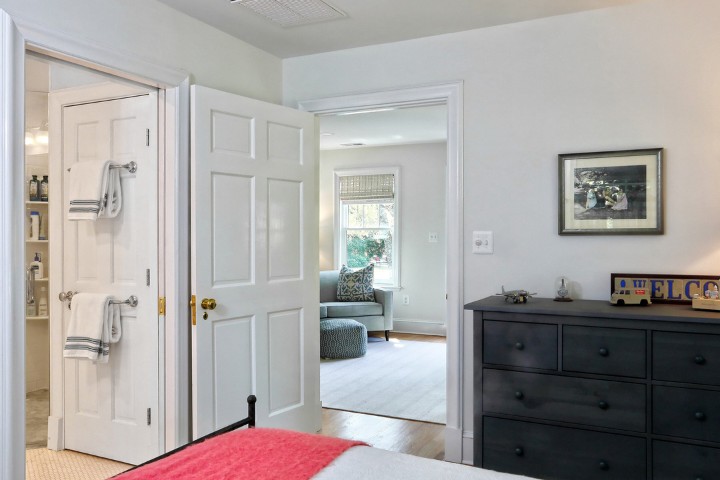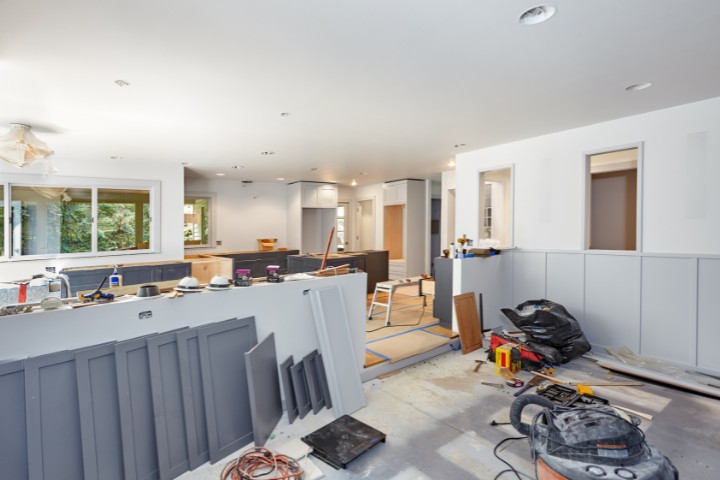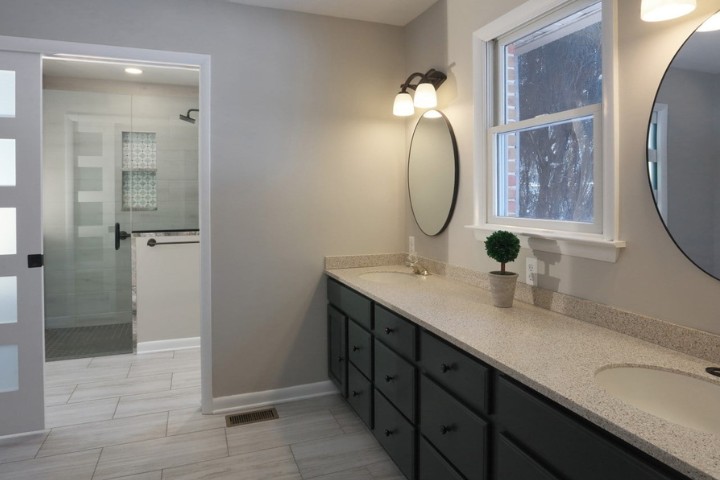Do you or a loved one want to enjoy the comfort of home well into your golden years? Aging in place has become a preferred choice for many Maryland residents who value independence, familiarity, and the ability to live safely in their own homes. However, remaining at home as we age requires thoughtful remodeling and strategic upgrades that balance comfort, safety, and style.
In this article, we’ll explore practical aging-in-place home remodeling tips designed specifically for Maryland homeowners. From simple design adjustments to major renovations and financial support resources, these ideas will help you or your loved ones thrive at home longer, without sacrificing quality of life.
What Is Aging In Place Remodeling?
Aging in place remodeling refers to home modifications that make living spaces safer and more accessible for older adults. These upgrades accommodate changes in mobility, vision, strength, and coordination that can occur with aging. The goal is to ensure homeowners can move around their home confidently and comfortably with minimal assistance.
Aging in place remodeling embraces universal design, which benefits all ages and abilities. It integrates thoughtful design solutions that blend seamlessly with your existing home aesthetic—no hospital-like fixtures or clunky features needed.
Key Remodeling Tips for Aging in Place

1. Install Wider Doorways with Lever Handles
Standard doorways can be too narrow for wheelchairs or walkers. Expanding door widths to 36 inches or more allows for easier movement throughout the home.
Lever-style door handles are another essential upgrade, as they are easier to grip than traditional knobs—especially for those with arthritis or limited hand strength.
2. Zero-Threshold Entryways and Showers
Thresholds, steps, and curbs can be major fall hazards. Zero-threshold showers are a must for accessibility, allowing homeowners to walk or roll directly into the space without stepping over a lip. Add a handheld showerhead, bench seating, and slip-resistant tiles for extra safety.
Zero-threshold entryways at exterior doors improve mobility and provide smoother transitions for wheelchairs, scooters, or walkers.
3. Slip-Resistant Flooring
Choose flooring with good traction and minimal glare to reduce fall risk. Excellent choices for aging in place include:
- Textured vinyl
- Cork flooring
- Low-pile carpet
- Slip-resistant tile with matte finishes
Avoid high-gloss surfaces, rugs that can slip, and transitions between rooms with uneven flooring heights.
4. Strategically Positioned Grab Bars
Grab bars should be installed in high-risk areas like bathrooms, hallways, and near stairs. These supports should be:
- Anchored securely to wall studs
- Made from rust-resistant materials
- Available in finishes that match your bathroom or home decor
Newer grab bar designs can double as towel racks or soap holders, blending seamlessly into stylish bathrooms.
5. Clear Path Furniture Layouts
Reduce tripping hazards by arranging furniture with ample clearance for walking aids. Allow at least 36 inches of path width in hallways and between major furniture pieces.
Removing bulky or unnecessary items improves maneuverability, enhances visual clarity, and creates a more serene living space.
Larger Remodels for Long-Term Accessibility
6. Exterior Ramps and Railings
Even a single front step can be a barrier. A permanent or modular ramp provides a safe entrance and meets Americans with Disabilities Act (ADA) slope guidelines. Sturdy, well-positioned handrails are equally important to assist with balance and grip.
7. Indoor Stair Lifts or Residential Elevators
Multi-story homes pose a challenge for aging residents. Stair lifts can be installed on existing staircases to offer a safe and independent way to move between floors. For major remodels, residential elevators are another long-term solution.
8. Adjustable Countertops and Sinks
Remodeling your kitchen with lowered or adjustable-height countertops makes food preparation more accessible for those using wheelchairs or who cannot stand for long periods. Choose appliances with front controls and consider:
- Side-opening ovens
- Pull-out pantry shelves
- Drawer-style dishwashers
For bathrooms, install roll-under sinks with single-lever faucets for easier reach and temperature control.
9. Pull-Down Shelving and Smart Storage
Install pull-down or pull-out shelves in upper cabinets to keep everyday items within reach. Use D-shaped cabinet handles instead of knobs for easier grip.
Other great options include:
- Lazy Susans in corner cabinets
- Slide-out storage under counters
- Accessible closet systems with adjustable rods
10. Enhanced Lighting and Smart Systems
Good lighting is critical for safety, particularly for those with vision changes. Add task lighting in work areas, bright overhead fixtures, and night lights in hallways and bathrooms.
Voice-activated or motion-sensor lighting systems are helpful for aging homeowners and can be integrated with broader smart home systems, including:
- Voice-activated thermostats
- Security cameras
- Medical alert integrations
These systems allow homeowners to control their environment without needing to reach switches or buttons.
Universal Design That Blends with Maryland Homes

Universal design focuses on creating beautiful, functional environments for all abilities. Maryland residents can enjoy aging-in-place upgrades that match their home’s style, whether it’s a modern townhome in Baltimore, a colonial in Annapolis, or a cottage on the Eastern Shore.
Choose finishes and fixtures that align with your existing color palette, trim work, and architectural details. Aging-in-place doesn’t mean sacrificing beauty; it’s about enhancing your home with lasting comfort and dignity.
Work with a licensed Maryland contractor who understands both universal design principles and the specific requirements of your municipality.
Permits and Planning in Maryland

Depending on the scope of your remodeling project, you may need building permits or inspections. Typical remodeling projects requiring permits include:
- Ramp installations
- Bathroom remodels with plumbing changes
- Stair lift or elevator installations
- Major kitchen renovations
Local permitting offices and your remodeling contractor can help determine what’s required for compliance with state and local codes.
Project Planning Tips to Minimize Disruption

Remodeling while living in your home can be challenging. To reduce disruption:
- Create a renovation timeline with your contractor
- Remodel in phases to maintain access to essential areas (e.g., kitchens, bathrooms)
- Relocate temporarily during extensive projects like full bath or kitchen overhauls
- Use dust barriers and keep clear zones for safety during construction
Good planning leads to a better remodeling experience and keeps stress levels low for the entire household.
Financing Your Aging-In-Place Remodel in Maryland

Maryland offers several financial assistance options to help homeowners cover the cost of aging-in-place renovations.
Maryland Programs and Resources:
- Accessibility Modification Program (AMP): Offers 0% interest loans to help Maryland homeowners make accessibility modifications.
- Maryland WholeHome Program: Provides rehab grants or loans to make homes safer and more livable for aging residents.
- Property Tax Credits: Local jurisdictions may offer property tax credits for home improvements that enhance accessibility.
- Medicaid Waiver Programs: May cover some home modification costs for eligible individuals through Community First Choice or Home and Community-Based Options Waiver.
- Private Long-Term Care Insurance: Some policies offer reimbursements for home modifications that support aging in place.
Always check with your county or city government, as local programs may vary.
Start Planning with Maryland’s Trusted Aging-In-Place Experts

With the right planning, design, and financial support, aging in place can be a safe, stylish, and empowering choice. Whether you’re making small upgrades or tackling a full renovation, having a trusted remodeling partner makes all the difference.

At Lynch Design | Build, we help Maryland homeowners create accessible, beautiful spaces for every stage of life. Our experienced team understands universal design and local building codes, guiding you through remodeling projects that support long-term independence without compromising aesthetics.
Ready to begin your aging-in-place remodel? Contact Lynch Design | Build today to schedule a consultation and explore your options. Visit Lynch Design | Build to learn more and start planning your forever home.
